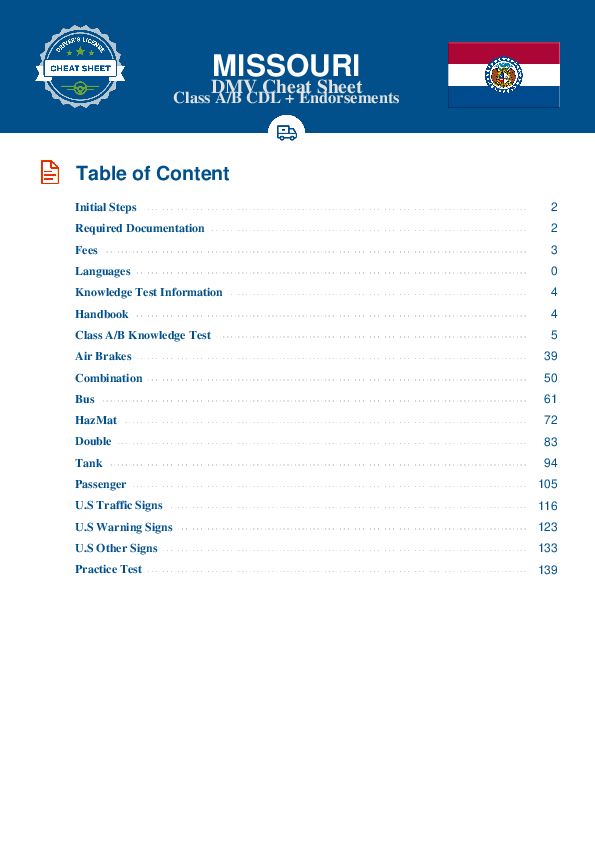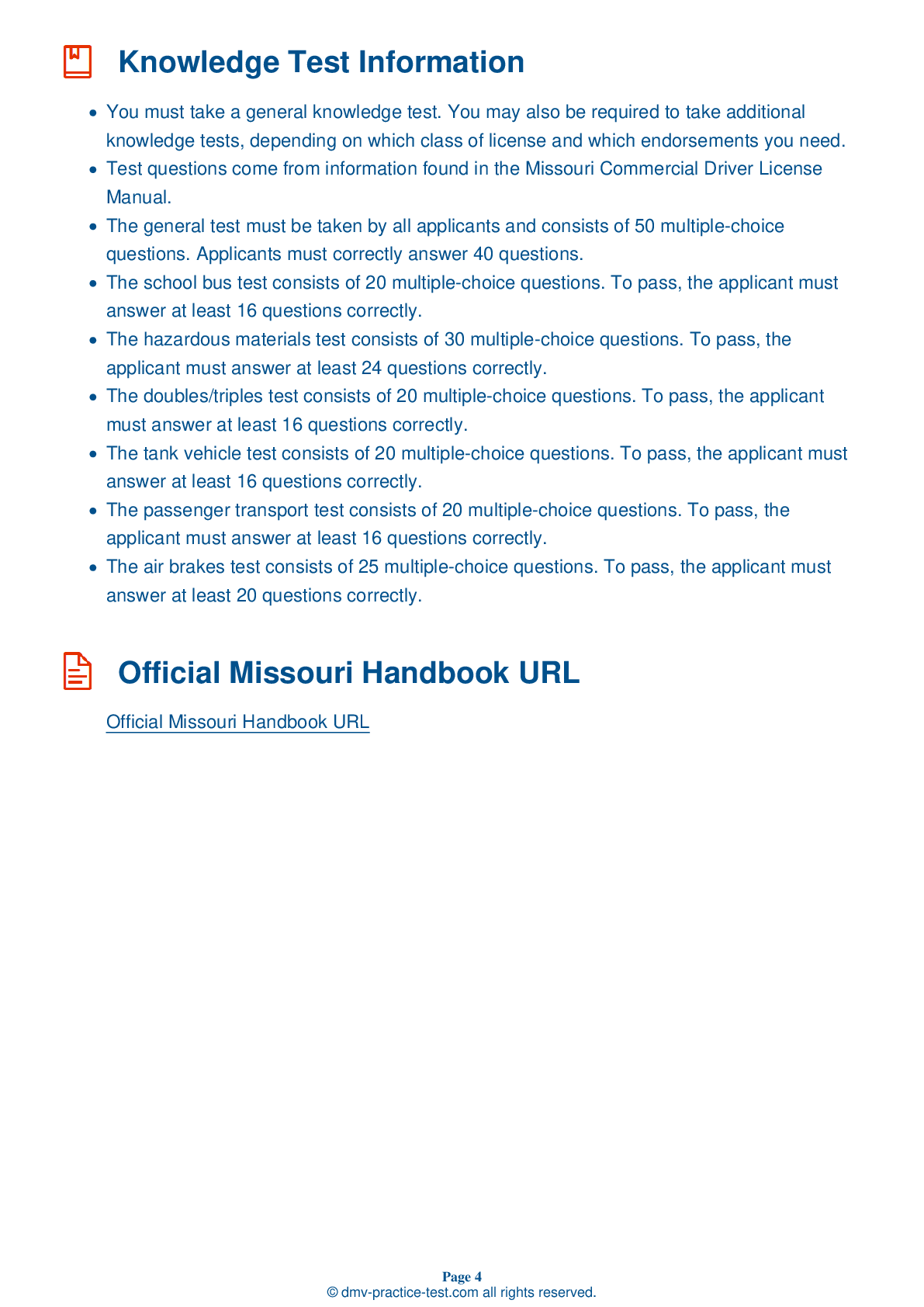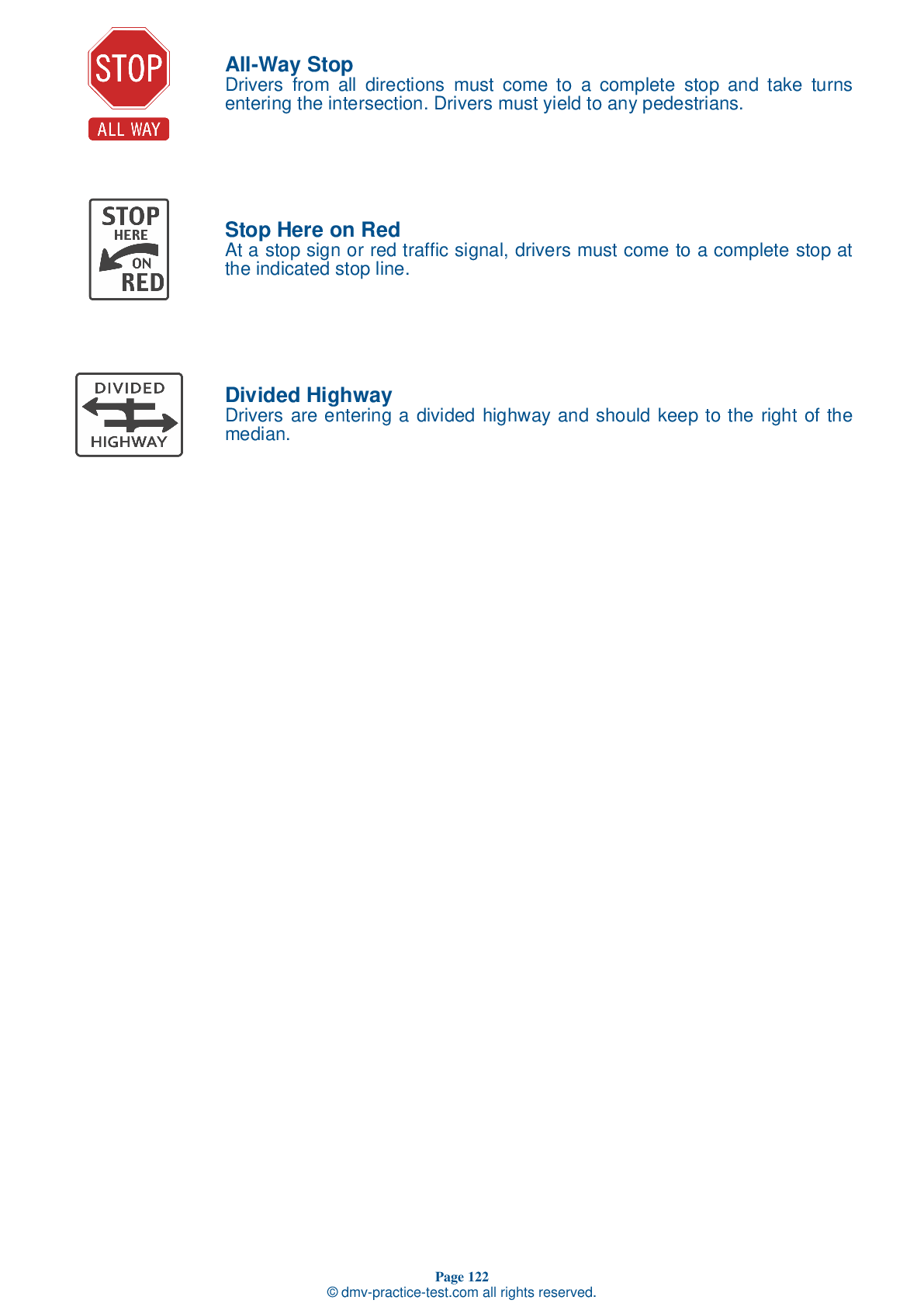Combination #1
Combination Vehicles Practice Test | Missouri 2025 #1 Page 2 of 3
Train for FREE online with our Missouri CDL combination vehicle test. The official exam test consists of several obligatory parts, with all of them checking your knowledge of different blocks of road rules. If you need to obtain a MO combination license in 2025, practice as much as possible. Free sample tests published on our website will help you check and improve your knowledge and boost your grades. Please bear in mind that DMV requirements for issuing a combination license may vary from state to state.
20
16
20
8 . In an empty combination vehicle, the stiff suspension springs and strong brakes will have:
An empty combination vehicle will come to a complete stop more slowly than a fully-loaded vehicle. With less weight in a trailer, the stiff suspension springs and strong brakes will have lower traction than they would if the vehicle carried more weight.
9 . When connecting a converter dolly to a second trailer, the trailer height should be ____ the center of the fifth wheel.
When connecting a converter dolly to a second or third trailer, the trailer height should correct. It should be slightly lower than the center of the fifth wheel.
10 . Rearward amplification refers to:
The "crack-the-whip" effect is a result of rearward amplification. If not properly handled, a trailer can tip over due to rearward amplification.
11 . The tractor protection valve:
A tractor protection valve keeps air in a tractor or truck air brake system should the trailer break away or develop a bad leak. The valve will close automatically if the pressure drops to an unsafe level.
12 . The trailer hand valve should not be used while you are driving because:
Never use the trailer hand valve while operating your vehicle. Using the trailer hand valve while driving can cause your trailer to skid.
13 . Combination vehicles are usually:
Driving combination vehicles requires more skill than driving single commercial vehicles. Combinations are generally longer, generally heavier, and are more vulnerable to rollover.
14 . When glad hands are coupled, the seals should be pressed together at a ____ angle.
When coupling, be sure to couple the proper glad hands. When glad hands are connected, the seals should be pressed together at a 90-degree angle.
2025 Missouri | Frequently Asked Questions
To acquire a CDL Hazmat endorsement in Missouri, you must first have a Commercial Driver's License (CDL). After that, apply for the endorsement at a Missouri State Highway Patrol Driver Examination Station, pass the written test, and complete a federal security threat assessment. This includes fingerprinting and background checks conducted by the Transportation Security Administration (TSA).
To obtain a CDL Hazmat license in Missouri, you must already have a Commercial Driver's License (CDL). You also need to pass the Hazardous Materials Endorsement Knowledge Test, provide proof of U.S. citizenship or lawful permanent residency, complete a fingerprint-based background check, and pass the TSA security threat assessment.
When applying for a CDL Hazmat endorsement in Missouri, you need to provide proof of U.S. citizenship or lawful permanent residency. This could be a birth certificate, passport, or green card. Additionally, you'll need your current Commercial Driver's License (CDL), your Social Security card, and completed application forms for the Hazmat endorsement and TSA security threat assessment.
Yes, there is a dedicated written test for the CDL Hazmat endorsement in Missouri. The Hazardous Materials Endorsement Knowledge Test covers topics related to the transport of hazardous materials, including safety procedures, regulations, and handling techniques. You must pass this test to receive your Hazmat endorsement.
The written test for the CDL Hazmat endorsement in Missouri covers several topics related to hazardous materials. These include identifying different types of hazardous materials, understanding shipping papers and placards, loading and unloading procedures, safety rules, emergency response procedures, and federal regulations related to hazardous material transportation.
Yes, obtaining a CDL Hazmat endorsement in Missouri involves additional fees. This includes a $25.50 fee for the endorsement itself and a $86.50 fee for the required TSA background check. These fees are subject to change, so it's advisable to check with the Missouri Department of Revenue for the most current information.
Yes, obtaining a CDL Hazmat endorsement in Missouri requires a federal background check and a security threat assessment by the Transportation Security Administration (TSA). These are mandatory steps to ensure the safety and security of hazardous materials transportation. The applicant must be free of disqualifying criminal offenses to receive the endorsement.
Yes, obtaining a CDL Hazmat endorsement in Missouri necessitates specialized training. You must pass a written test based on the Hazardous Materials section of the Missouri Commercial Driver License Manual. While no specific certification is required, training helps ensure you understand how to safely transport hazardous materials.
No, you cannot transport hazardous materials in Missouri without a valid Commercial Driver's License (CDL) with a Hazardous Materials (Hazmat) endorsement. This is a federal regulation enforced by the U.S. Department of Transportation. Violating this rule can result in substantial fines and penalties, including the suspension or revocation of your CDL.
Yes, you can add a Hazmat endorsement to your current CDL license in Missouri. You don't need to apply for a new CDL. However, you must pass the Hazardous Materials Knowledge Test, provide fingerprints for a background check, and undergo a TSA security threat assessment to get the endorsement.



